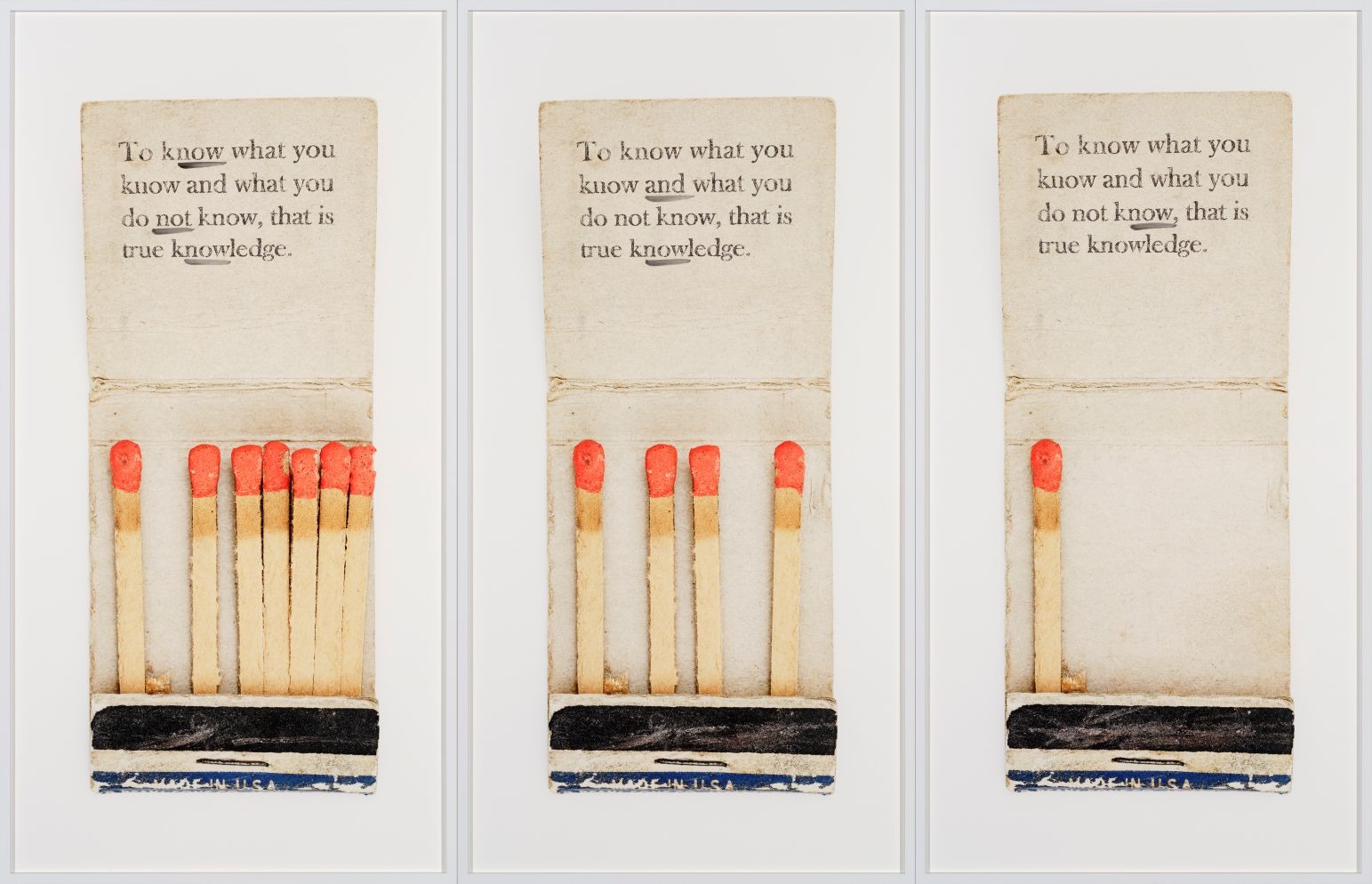Language/Text/Image
Can you hear me? Can you see me?
27 Jun - 07 Dec 2025

Natalie Czech, A poem by repetition by Getrude Stein, 2023, Coutesy die Künstlerin und Monika Schnetkamp Collection, VG Bild-Kunst, Bonn 2025, Photo: Monika Schnetkamp Collection
JOHN BALDESSARI, ALICE BIDAULT, NATALIE CZECH, AYŞE ERKMEN, NADINE FECHT, GARY HILL, NATIONAL AIDS MEMORIAL QUILT, GORDON PARKS, MARKUS VATER, GILLIAN WEARING
Exhibition: June 27 – December 7, 2025
An exhibition of the Draiflessen Collection, Mettingen (initially shown there from 20.10.2024 until 16.02.2025) is now on view in KAI 10 | ARTHENA FOUNDATION, Düsseldorf. Conceived and curated by Dr Barbara Segelken and Birte Hinrichsen. Curatorial adaptation for KAI 10: Ludwig Seyfarth.
Language, text and image are among the most important means of human expression. Far from being neutral in character, they are allied to certain values, norms and cultural procedures, as well as being anchored in social systems. Inevitably, they also serve to draw boundaries which can include or exclude people. Who or what arbitrates whether something may be said or seen?
The questions “Can you hear me (now)?” or “Can you see me (now)?” have become very familiar since the rapid expansion of digital interconnectivity. They are frequently voiced by those seeking to ascertain whether they are being clearly heard or seen within a communicative setting. But they also highlight the human need to be heard or seen, and to learn how these mechanisms of in- and exclusion are regulated and circumscribed.
The exhibition Language/Text/Image presents works from the 1950s to the present day, in which the relationship between language, text and image is addressed, reflected and interrogated in regard to its social and political dimensions. Using artistic means, the works explore the possibilities of getting something said, heard or seen.
The selected sound- and text-based works, photographs, prints, films or textiles all take up the challenge of working with something which – initially, depending on the respective circumstances – is unstable and hard to control. Conventions in language and image usage are not subverted but used innovatively to foster new semantic spaces. In this, the artists research the practices of reading and seeing, the interweavings of memory and history, and the boundaries between fact and fiction. At the same time, they challenge ingrained patterns of perception and give space to the representation of insecurities and misunderstandings.
In addition, it becomes evident that history and story-telling can be grasped as something that itself has become a historical entity, determined by and resulting from shared experiences – and that this too can change. This happens against very differing backdrops in terms of origins and character, as well as subjective experience – and at times when the need for security and control acquires particular urgency.
The exhibition presents recently created works, but also stretches far back to a time before the advent of digital connectivity: the photographs of Gordon Parks from the 1950s show everyday situations in the south of the US, where segregation of the white and Black populations was ubiquitous also in the form of regulatory signs. On the signs that the people in Gillian Wearing’s photographs are holding aloft, on the other hand, you can read what happens to be on their minds at that very moment. The manner in which language regulates social processes is a central theme in Nadine Fecht’s work. Her approach is also tied to the tradition of linguistic-analytical concept art, as manifested in key video works by John Baldessari and Gary Hill. Formal rules also determine the works of Natalie Czech which are additionally featured in this exhibition in KAI 10. Furthermore, they highlight a playfully poetic aspect that is found in the text-image combinations of Markus Vater. Ayşe Erkmen dissects a dummy text in Latin characters to resemble the hieroglyphs of a language from a non-Western culture. Another such language provides Alice Bidault’s point of reference when she cites the knotting techniques of the Quipus, first developed by the South American Incas. Textile recollections of the deceased are represented in the large-format, visually stunning quilts of the National AIDS Memorial Quilt, the world’s largest communal art project whose hand-made commemorative quilt panels have been collected by the National AIDS Memorial in San Francisco.
